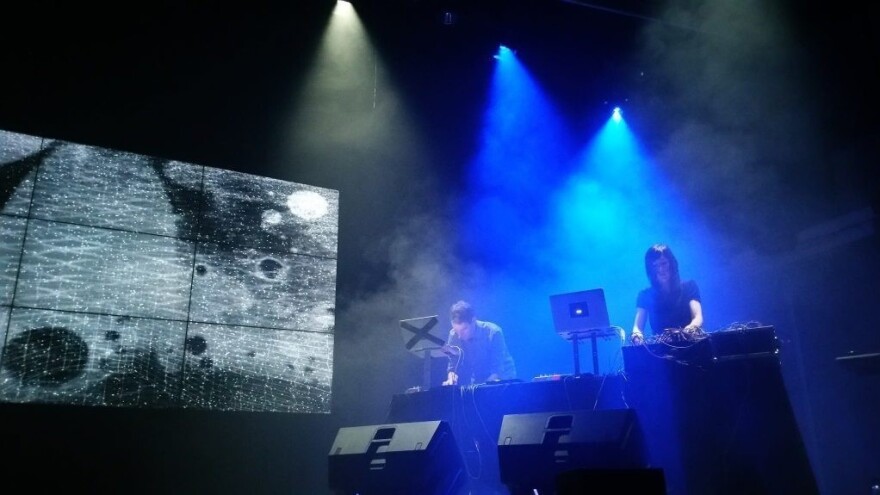Sometimes, it really is all about that bass.
A recent study in the journal Current Biology found that people danced 12% more when very low frequency bass was played.
The study was done by scientists at the LIVElab at McMaster University in Ontario, Canada, who wanted to see what musical ingredients make us want to dance.
"We look at things like what kinds of rhythms most pull people into that steady beat that we groove along with, and what kinds of interesting, syncopated, complex rhythms make us really drawn in and want to move more," said Daniel Cameron, a neuroscientist and the lead author of the study.
Now, the lab for this experiment wasn't the classic fluorescent lights, white coats and goggles setup. Instead, the LIVElab space was converted into an electronic dance music concert, and EDM duo Orphx performed live for volunteers adorned with headbands that had a motion capture sensor.

The lab was equipped with special special speakers that can play a very low frequency bass, undetectable to the human ear. The set lasted about an hour, and researchers introduced that very low bass every 2.5 minutes, and found that the concertgoers moved more when the speakers were on – even though they couldn't hear it.
Cameron said our vestibular system can help explain why.
"It's the inner-ear structures that give us a sense of where our head is in space," he said. "That system is sensitive to low-frequency stimulation, especially if it's loud."
"We also know that our tactile system, that's our sense of touch ... is also sensitive to low-frequency stimulation, low-frequency sound."
So that feeling you get at a concert when you're next to a speaker and you can feel it shaking in your chest is the tactile stimulation of sound when it's loud.
"And that's feeding into our motor system in the brain, the movement control system in our brain," Cameron said. "So it's adding a little bit of gain. It's giving a little more energy ... from that stimulation through those systems."
Some people hear music and can't help but sway or bop along, whether there are low, silent bass frequencies or not. So why do humans dance? Cameron says it's hard to test this, but there has been some work on why we may have evolved this way.
"We know that moving together in synchrony when we're making music together and dancing together leads to social bonding. We feel better about the people we're with. We feel more connected with them," he said. "So you can imagine this has potential advantages for groups throughout the long history of our species."
We also see the use of music and movement for things like regulating emotions, Cameron said, especially when it comes to taking care of babies.
"We try to soothe them. We sing to them, and we rock them along. So this idea of moving and singing and modulating arousal is also a functional thing to do," he said.
Evolution aside, Cameron finds value in knowing his study has uncovered just one of the ingredients for what makes us want to dance a little bit more.
Copyright 2022 NPR. To see more, visit https://www.npr.org.




